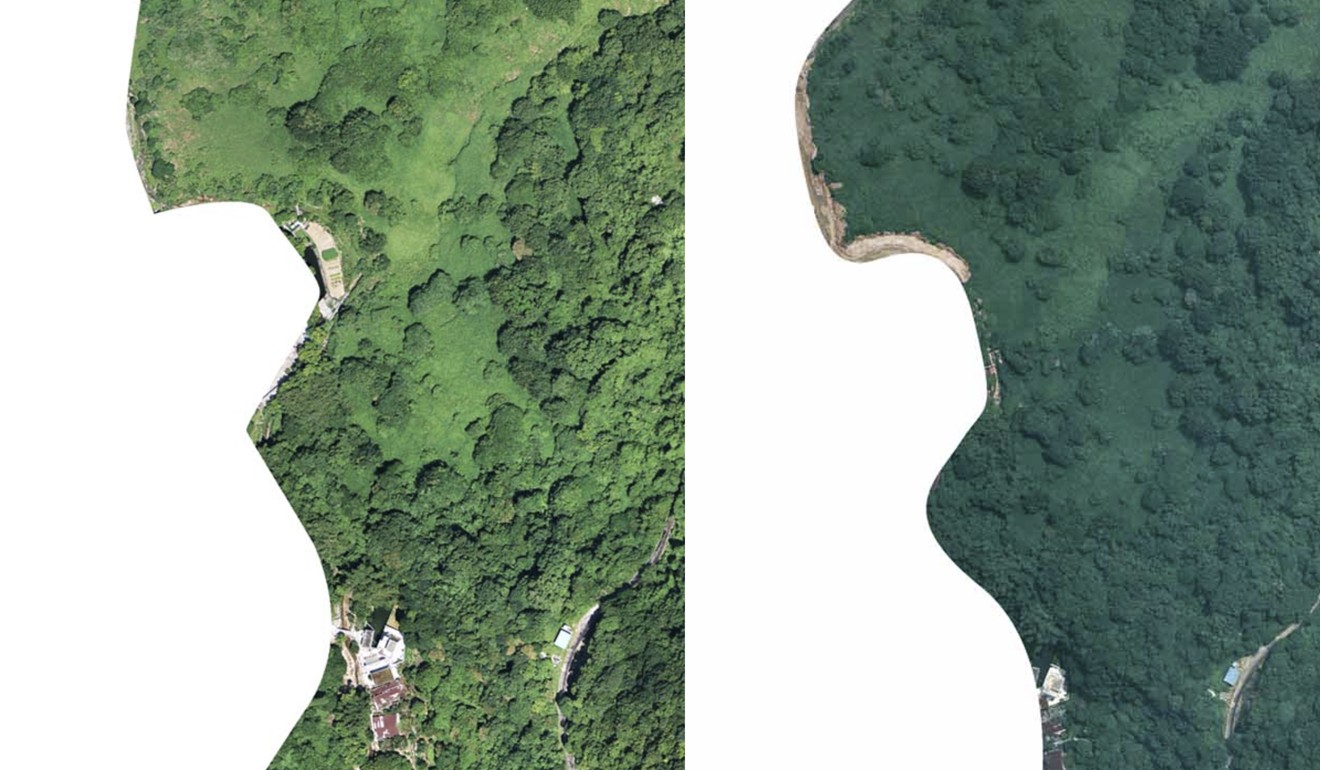
Hong Kong may step up monitoring of border after accusations Guangdong defence force stole land
- Carrie Lam says Hong Kong and Shenzhen authorities had different understanding of where the border lay
- Landowners affected may claim compensation
Hong Kong land officials may step up monitoring of the border by taking aerial photos after mainland Chinese officers on the other side allegedly turned city land into a garden without permission.
The Lands Department announced the move a day after the city’s leader revealed the Hong Kong and Shenzhen governments were locked in a border dispute, both sides having a different understanding of how it should be drawn.
The department said the site in question was not considered “high-risk”, as public access was restricted.
“Due to public concerns, the department will review the current arrangement and look into the possibility of using aerial photos to keep our land border under watch,” it said in a statement on Thursday.
Land records showed lots owned by two Hongkongers and two land trusts were affected.
On Wednesday, Chief Executive Carrie Lam Cheng Yuet-ngor told lawmakers both sides held a meeting after the revelation.
She said Shenzhen officials claimed to have diverted the course of the Sha Tau Kok River, which forms the border, for flood prevention, in 2013 and arbitrarily changed the demarcation point, without telling Hong Kong.
Her government maintained the border had not moved, but Shenzhen had a different understanding of the demarcation. Both sides would listen to legal advice and work together to resolve the dispute, she said.
Some of the landowners have said they might claim compensation for their occupied land.
Council Front lawmaker Eddie Chu Hoi-dick said police should be in a better position to monitor land use at the border and they should step up patrols.
While the city’s officials said they had been kept in the dark, an aerial photo acquired by the Post from the Lands Department showed that, in 2012, there was exposed earth along the border near the site that would become the defence officers’ garden. It was not clear whether the work was associated with any drainage work Shenzhen claimed it had done.
An aerial photo dated 2015 showed a garden clearly visible.
That image was part of a collection regularly taken by the department for map-making purposes.
Executive Council member and barrister Ronny Tong Ka-wah said it was unreasonable for Shenzhen officials to claim the border had moved after they diverted the Sha Tau Kok River.
“There may have been some ground, if the border was moved naturally,” Tong said.
He added that any changes to Hong Kong’s border would need the approval of the National People’s Congress, and a new order from the State Council had to be issued.
This was because Hong Kong’s stance was based on an order issued by China’s State Council in 1997, which said the border between Hong Kong and the mainland should lie at the centre point of the Sha Tau Kok River.
Additional reporting by Sum Lok-kei


